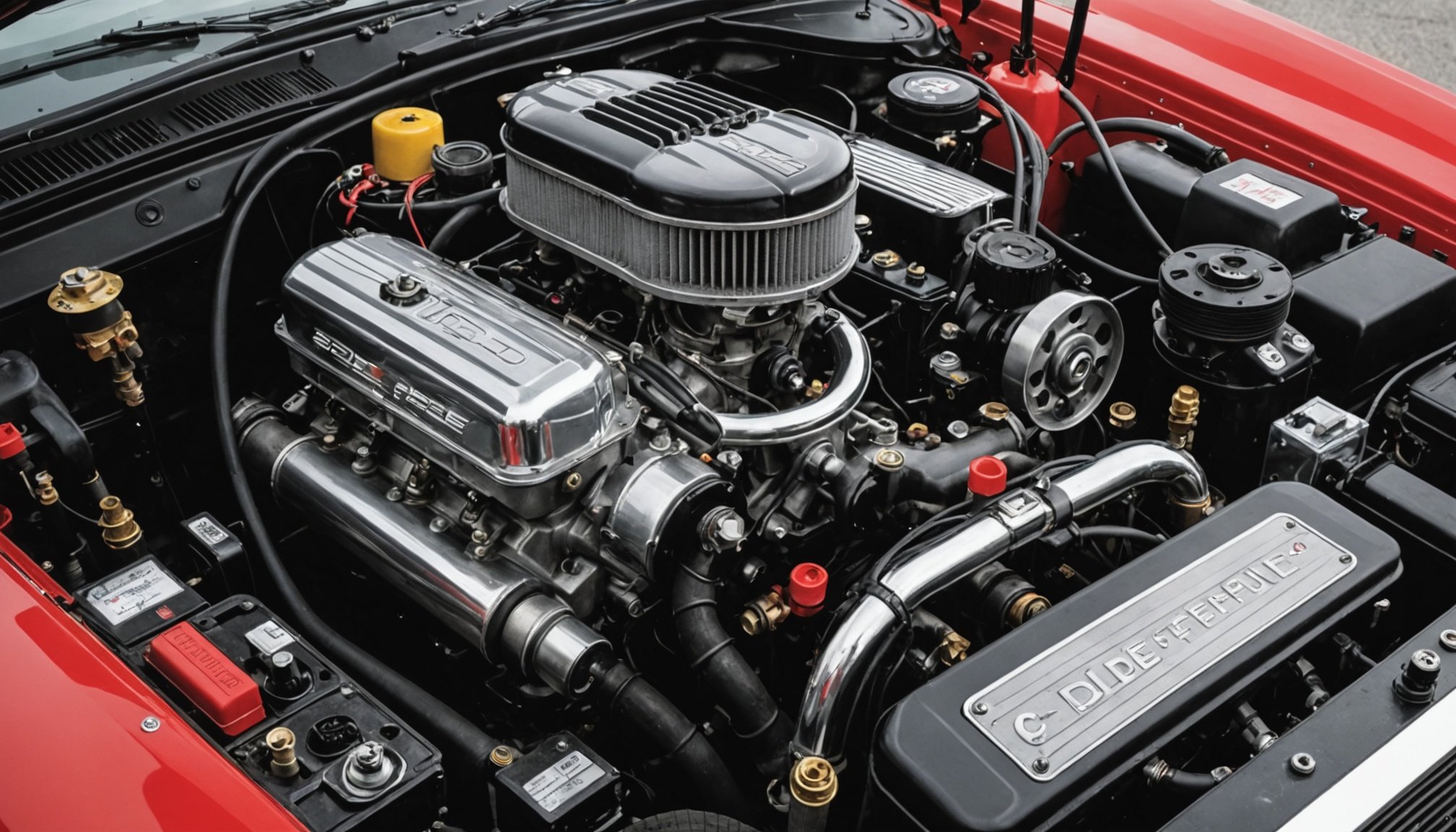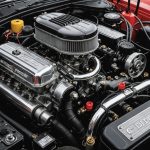Idle speed adjustment can seem daunting, particularly for UK carbureted car enthusiasts. This essential tuning process not only enhances engine performance but also ensures smoother operation and improved fuel efficiency. Understanding the factors that contribute to optimal idle speed is vital for every petrolhead. This guide aims to simplify the intricacies of idle speed adjustment, providing step-by-step instructions and expert tips to help you achieve the perfect balance. Get ready to boost your car’s performance and take control of your driving experience!
Understanding Idle Speed Adjustment
Idle speed is a critical component in maintaining vehicle performance. It refers to the engine's revolutions per minute (RPM) when the vehicle is stationary. Proper idle speed ensures that the engine runs smoothly without stalling or causing unnecessary wear.
Have you seen this : Ultimate Guide to Enhancing Family Car Interiors for Unforgettable Comfort on Long UK Road Trips
Importance of Idle Speed
Idle speed plays a significant role in overall vehicle performance. It affects how well your car starts, idles, and accelerates. If the idle speed is too low, the engine may stall, especially in colder conditions. Conversely, if it's too high, it can lead to increased wear and tear and higher fuel consumption.
Impact on Fuel Efficiency and Emissions
Idle speed directly influences fuel efficiency and emissions. A well-adjusted idle speed helps maintain optimal fuel consumption, reducing the amount of fuel wasted when the vehicle is not in motion. Furthermore, it minimises harmful emissions, contributing to a cleaner environment. Proper adjustment is crucial for meeting emission standards, especially in countries with stringent regulations like the UK.
Additional reading : DIY Guide: Mastering Custom Vinyl Wraps for Your Car in the UK Without Expert Assistance
Carbureted Systems in UK Cars
In the UK, many older vehicles use carbureted systems, which require manual idle speed adjustments. These systems mix air and fuel for the engine, and their performance is heavily dependent on proper idle speed settings. Understanding how to adjust these systems can lead to improved vehicle performance and efficiency.
Tools Required for Adjustment
To adjust the idle speed on carbureted systems, having the right tools is essential for precision and safety. The primary tools for carburetor adjustment include a flathead screwdriver, a tachometer, and a vacuum gauge. These tools ensure accurate adjustments, maintaining the engine's optimal performance.
Essential Tools Needed for Idle Speed Adjustment
- Flathead Screwdriver: Used for turning the idle adjustment screws on the carburetor.
- Tachometer: Measures the engine's RPM, ensuring the idle speed is set correctly.
- Vacuum Gauge: Assists in fine-tuning the engine by measuring manifold vacuum.
Recommended Brands and Models for Accuracy
Consider reliable brands like Snap-On or Craftsman for your tools. These brands offer models with high accuracy and durability, crucial for making precise adjustments. Investing in quality tools can prevent future issues and ensure consistent engine performance.
Safety Gear and Precautions While Working
When working on vehicle adjustments, safety gear is paramount. Wear protective gloves and goggles to shield against fuel or debris. Ensure the vehicle is on a stable surface and the engine is off when attaching tools. These precautions help prevent accidents and ensure a smooth adjustment process.
Step-by-Step Guide to Adjust Idle Speed
Adjusting the idle speed of your vehicle is a crucial task that can significantly improve performance and efficiency. This guide outlines the idle speed adjustment procedure in detail.
Preparing Your Vehicle
Before starting the idle speed adjustment procedure, ensure your vehicle is ready. Begin by warming up the engine to its normal operating temperature. This ensures that the adjustments reflect real-world driving conditions. Park the vehicle on a level surface and engage the parking brake for safety. Disconnect any electronic devices that might interfere, such as the air conditioning or radio.
Making the Adjustment
To begin the idle speed adjustment procedure, locate the idle adjustment screw on the carburetor. Using a flathead screwdriver, turn the screw slowly. If the engine RPM is too low, turn the screw clockwise to increase the speed. Conversely, if the RPM is too high, turn it counterclockwise. Use a tachometer to monitor RPM changes, aiming for the manufacturer's specified idle speed.
Verifying the Changes
After completing the idle speed adjustment procedure, it's essential to verify the changes. Restart the engine and let it idle. Observe the RPM using the tachometer. If the engine runs smoothly without stalling or excessive vibration, the adjustment is successful. Recheck the settings after a short drive to ensure consistency.
Common Issues and Troubleshooting
When dealing with troubleshooting idle speed problems, recognising signs of incorrect settings is crucial. If your vehicle stalls frequently or vibrates excessively at rest, the idle speed may be too low. Conversely, a high idle speed can cause increased fuel consumption and engine wear.
Signs of Incorrect Idle Speed Settings
- Frequent Stalling: Indicates the idle speed is set too low.
- Excessive Vibration: May result from low idle speed or engine misfires.
- High Fuel Consumption: Often a sign of a high idle speed.
Common Pitfalls to Avoid During Adjustment
Avoid adjusting the idle speed without the engine reaching its normal operating temperature, as this can lead to inaccurate settings. Additionally, ensure that all electronic devices that might interfere with the process are disconnected. Relying on inaccurate tools can also lead to improper adjustments, so invest in quality instruments.
Solutions for Frequent Idle Speed Issues
For frequent stalling, gradually increase the idle speed using the adjustment screw until the engine runs smoothly. If fuel consumption is high, reduce the idle speed carefully. Always verify changes with a tachometer to ensure the RPM aligns with the manufacturer's specifications.
Safety Precautions During Adjustment
When working with engines, especially carbureted vehicles, safety is paramount. Engines can be hazardous, and understanding the safety tips for carburetor work is crucial to prevent accidents.
Importance of Safety When Working with Engines
The complexity and potential dangers of engines necessitate strict safety protocols. Carburetors involve fuel systems that can pose fire risks. Always work in a well-ventilated area to avoid inhaling fumes. Ensure the vehicle is on a stable surface and the engine is off before making any adjustments.
Specific Safety Measures for Carbureted Vehicles
- Protective Gear: Wear gloves and goggles to protect against fuel splashes and debris.
- Fire Safety: Keep a fire extinguisher nearby when working with fuel systems.
- Tool Safety: Use insulated tools to prevent accidental electrical shorts.
First Aid Tips for Common Injuries During Maintenance
In case of fuel exposure, wash the affected area with soap and water immediately. For cuts or abrasions, clean the wound and apply an antiseptic. If any injury seems severe, seek medical attention promptly. Familiarising yourself with these safety tips for carburetor work ensures a safer maintenance process, reducing the risk of accidents.
Performance Considerations for UK Vehicles
Understanding UK Vehicle Performance Standards is crucial for maintaining compliance and ensuring optimal vehicle function. In the UK, regulatory standards for emissions are stringent, necessitating precise idle speed adjustments to meet these requirements. Properly regulated idle speed not only helps in reducing harmful emissions but also enhances overall vehicle performance by ensuring smooth operation and preventing stalling.
Idle speed directly impacts how a vehicle performs under various conditions. A well-adjusted idle speed allows for efficient fuel usage and reduces engine wear. Modifications to a vehicle, such as changes to the exhaust system or engine tuning, can alter idle speed requirements. It's essential to consider these modifications when adjusting idle speed to maintain compliance with UK standards.
Modifications can lead to changes in how the engine idles, potentially affecting emissions and performance. For instance, performance-enhancing modifications might require a recalibration of the idle speed to ensure that the vehicle operates within legal limits. Understanding these dynamics is vital for anyone looking to modify their vehicle while adhering to UK performance standards. Regular checks and adjustments are recommended to keep your vehicle running efficiently and legally.
Advanced Adjustment Techniques
Fine-tuning your carburetor can significantly enhance vehicle performance. Advanced carburetor tuning involves precise adjustments to both the idle speed and air-fuel mixture, ensuring optimal engine function. Begin by using a tachometer and vacuum gauge to measure RPM and manifold pressure. Adjust the idle mixture screws to achieve a balanced fuel-to-air ratio, which impacts combustion efficiency and engine responsiveness.
Techniques for Fine-Tuning Idle Speed and Mixture
- Idle Mixture Screws: Adjust these screws gradually to find the sweet spot where the engine runs smoothly without stalling or excessive fuel consumption.
- Tachometer and Vacuum Gauge: These tools are crucial for monitoring changes and ensuring adjustments align with manufacturer specifications.
Impact of Altitude and Temperature on Idle Speed
Environmental factors like altitude and temperature can affect carburetor tuning. Higher altitudes may require leaner mixtures due to reduced air density, while colder temperatures might necessitate richer mixtures to prevent stalling. Regularly assess your vehicle's performance under varying conditions to maintain optimal settings.
When to Consider Professional Tuning Services
If adjustments do not yield desired results, consider seeking professional tuning services. Experts can provide advanced carburetor tuning to address complex issues, ensuring your vehicle operates efficiently and meets regulatory standards.
Visual Aids and Diagrams
Understanding carburetor adjustment can be significantly enhanced through the use of visual aids. These tools are invaluable for both novices and experienced mechanics, providing clear guidance on adjustment procedures. Visual aids help in comprehending complex systems by breaking down the process into manageable steps.
Types of Diagrams That Assist in the Process
Several types of diagrams can assist in carburetor adjustment. Exploded view diagrams show each component's position and relationship within the carburetor, making it easier to identify parts during adjustments. Flowcharts can guide the adjustment process step-by-step, ensuring no critical steps are missed. Cross-sectional diagrams provide insight into the internal workings, illustrating how adjustments affect performance.
Where to Find Reliable Visual Resources
Reliable visual resources for carburetor adjustment can be found in automotive repair manuals, which often include detailed diagrams and instructions. Online platforms, such as automotive forums and educational websites, also offer a wealth of visual aids. Ensure that these resources are from reputable sources to guarantee accuracy and reliability. Using these visual aids can streamline the adjustment process, making it more efficient and effective.
User Experiences and Testimonials
Real-life experiences with carburetor adjustment can provide valuable insights into the process. Many UK car owners have shared their successful stories of idle speed adjustments, highlighting the improvements in vehicle performance and fuel efficiency. These testimonials often reveal the satisfaction of achieving a smoother engine operation and reduced stalling incidents.
Real-Life Stories of Successful Adjustments
Car enthusiasts frequently report that proper carburetor adjustment leads to noticeable enhancements in engine responsiveness and overall driving experience. For instance, one owner of a classic Mini mentioned how adjusting the idle speed transformed their vehicle, making it more reliable and enjoyable to drive.
Common Feedback from UK Car Owners
Feedback from UK car owners often emphasises the importance of precision in carburetor adjustment. Many note that using quality tools and following a systematic approach yields the best results. The satisfaction of reduced fuel consumption and smoother idling is a common theme among these testimonials.
Lessons Learned from User Experiences
Users have learned that patience and attention to detail are crucial when adjusting the carburetor. Ensuring the engine is at the correct operating temperature and using accurate instruments can prevent common pitfalls. These experiences underline the significance of proper carburetor adjustment for optimal vehicle performance.
Resources for Further Learning
For those eager to deepen their understanding of carburetor adjustment and vehicle maintenance, several additional learning resources are available. These resources cater to both novices and seasoned enthusiasts, offering a wealth of information and community support.
Recommended Books and Online Courses
Books like "How to Tune and Modify Carburetor Performance" provide comprehensive insights into the mechanics of carburetor adjustment. Online courses, such as those offered by Udemy, also cover the intricacies of idle speed tuning, complete with video demonstrations and expert guidance.
Forums and Communities for Carbureted Car Enthusiasts
Engaging with forums like the Classic Car Club of Great Britain can be invaluable. These platforms connect you with fellow enthusiasts who share tips, experiences, and troubleshooting advice. Participation in these communities can enhance your practical knowledge and provide support.
Local Workshops and Events Focused on Vehicle Maintenance
Attending local workshops or events dedicated to vehicle maintenance can offer hands-on experience. Many automotive clubs host events where experts demonstrate carburetor adjustment techniques. These gatherings are excellent opportunities to learn directly from professionals and network with others passionate about vehicle care.











